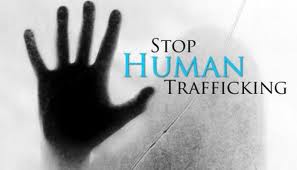Human rights activists acclaimed a Dominican Republic (DR) court’s historic conviction and 15-year prison sentencing of two Haitian child traffickers charged with smuggling, trafficking, and exploiting Haitian children’s labor. “It is the first time Haitian traffickers have been jailed in the Dominican Republic for trafficking children,” declared the International Organization for Migration (IOM) through a released statement that welcomed the landmark ruling. “IOM is pleased to see justice served on these traffickers,” it stressed.
Dominican authorities arrested Willi Yan and Coldonie Pie in February 2011 following several house-raids conducted in Los Alcarrizos, a poor residential neighborhood of capital city Santo Domingo, which coughed up 44 children. “They found children crammed in rooms, some sitting on the floor, others under beds,” reported IOM. As Zoe Stopak-Behr, spokesperson of the leading international organization for migration, explained to journalists, “Parents were convinced their children were being taken for a better life in Santo Domingo and even to Miami.” Yet, authorities identified 22 of the 44 children rescued as child trafficking victims.
A Second Collegiate Court found Yan and Pie guilty of trafficking children, ages 8 to 14, from Haiti, beating and exploiting them for forced labor. During the trial, the prosecution identified at least 12 children the two men smuggled from Haiti, turned into street beggars, subjected them to verbal, physical and psychological abuse. The two men even denied the victims food should their menial tasks fail to produce any money. Further, state prosecutors’ closing argument also revealed that two good Samaritans whose daily encounter with four children in the same street corner raised suspicions, intervened and turned them over to the National Children Council (NCC). Once in foster care, the minors detailed their daily routines, which led authorities to a hell hole where the 44 others lived in subhuman conditions.
“The conviction is extremely important for prevention,” declared Stopak-Behr to award-winning AlterNet, a Thompson Reuters Foundation humanitarian news site. “It shows that there is a penalty for trafficking and that the Dominican authorities are working,” he added. However, trafficking in persons between Hispaniola’s sister-nations extends far beyond Yan and Pie’s monstrosity; it is a well-orchestrated, lucrative business that both governments admittedly overlook.
From their historic colonial origin to American occupations, autocratic rules, and democratic acquisitions, Haiti and DR shared more than just the island of Hispaniola; their historical and cultural heritages revealed striking similarities. Nevertheless, the two nations’ developmental processes over the last half-century evolved astonishingly distinct from one another. According to the World Bank (WB), DR’s GDP per capital grew five times larger than that of Haiti, though virtually the same in 1960. A World Bank press released explained the phenomenon: “Haiti has been held back by greater political and micro-economic instability, along with lower investment in infrastructure and human capital, and environmental deterioration,” it read. Foreign policy think tanks attributed current immigration nightmares faced the sister-nations to DR’s superior economic performance, a strategic tool for child traffickers.
In 2009, the United Nations Children’s Fund (UNICEF) reported, “At least 2,000 children were trafficked across the poorly controlled border between Haiti and the DR),” according to this Reuters article. While officials increased U.N. Police Division’s (UNPOL) patrol frequency along the 227-mile border to deter child trafficking, post-quake stats proved even more egregious. A Miami Herald article reported traffickers smuggled more than 1,411 boys and girls out of the country just one month following the earthquake, a number that increased to 7,300 through October 2010, eight months later.
Nevertheless, Stopak-Behr remained optimistic about the DR’s first child traffickers’ conviction. “We hope it will have a preventive effect and help stop the constant flow of children into the Dominican Republic,” said the spokesperson to reporters, emphasizing, “The Dominicans had been criticized for some time now for not bringing many trafficking cases to trial.”
Partnering with the Haitian Embassy in Santo Domingo among other child protection entities, IOM helped transition the children to normal life. “Following successful pre-return risk assessments, the children were subsequently moved, by IOM, from the Dominican Republic to Haiti,” read a note posted on its website.